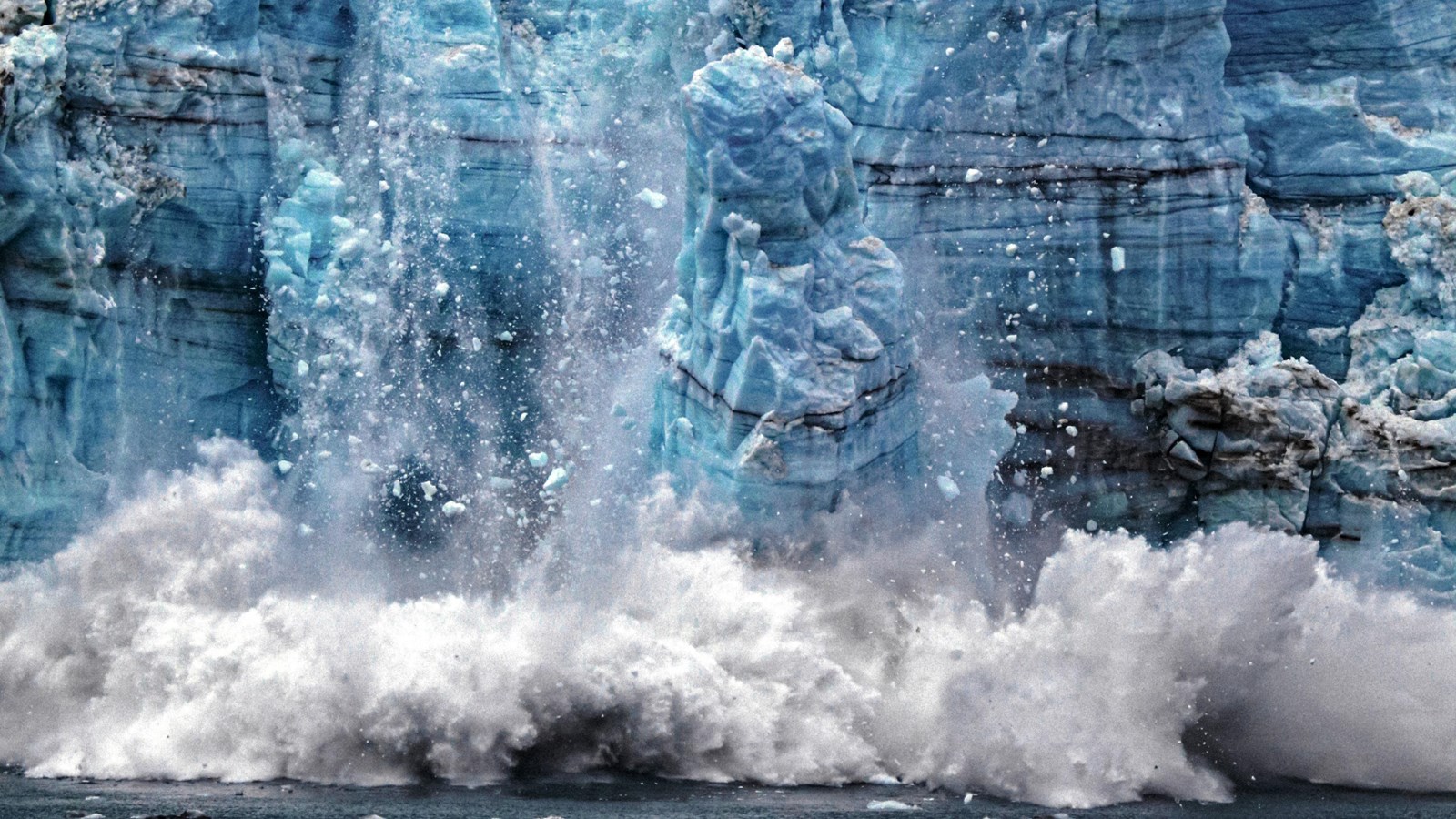Last updated: April 8, 2021
Place
What is Calving? In Glacier Bay

NPS Photo
|
If a glacier is fed by enough snow to flow out of the mountains and down to the sea, it is called a "tidewater" glacier - the type many people come to Glacier Bay to see. The interface of glaciers and ocean water is dynamic and complex. Compared to glacial ice, seawater is warm and highly erosive. As waves and tides undermines some ice fronts, great blocks of ice up to 200 feet may break off or "calve" and crash into the sea. The explosive sound, towering splash, and subsequent waves can be spectacular. Want to HEAR a glacier in action? Click here to visit our glacier soundscapes webpage. |
